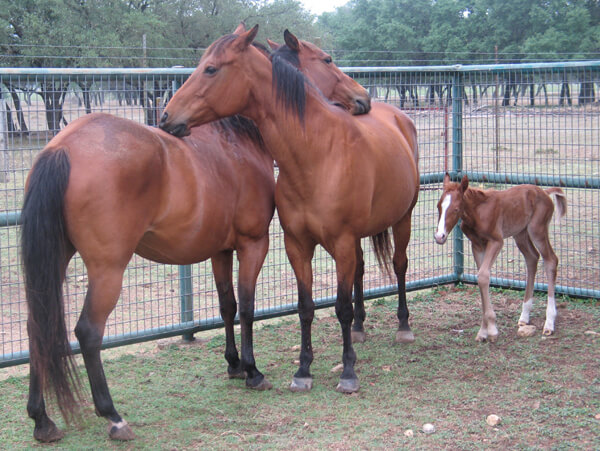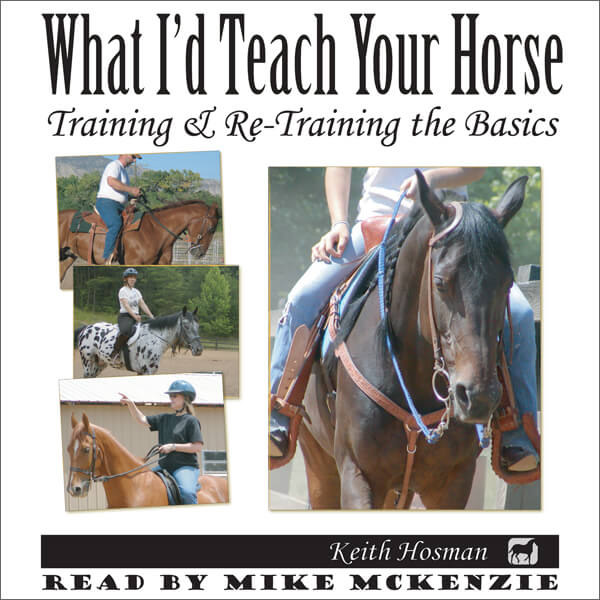Two trainers had already quit.
Beginning here, I'll show you, step-by-step, what I'm doing to turn these three into model citizens. Know that everything I'm doing, you can also do yourself if or when you find yourself in a similar situation.
That plan fell apart when they realized that all horses have to have their feet trimmed every 4-6 weeks when kept domestically. A farrier would need to work on each of the three mustangs most every month of their long 30-year lives. That meant that these horses that were never to be handled would need to be handled - a lot.
Even the typical horse isn't going to let you grab their feet - their primary means of escape - before you earn a great deal of trust. And here we're talking about horses that wouldn't come within a country mile of any human. I needed to be able to catch them, to halter them, to lead them. They needed to learn to stand calmly without flinching when I touched them, when they heard an odd noise or were brushed with various objects, when other horses called to them. and so on. This training wasn't going to happen overnight.
Like it or not, putting in a whole lot of basic ground training - regardless of why you have the horse or what you plan on doing with that horse - is a necessity. If you're considering bringing home a horse of your own - remember to budget in the time it takes to get in this sort of training - plus the ongoing cost to keep those feet trimmed (not to mention annual shots and worming every two months). Of course, if you learn to do much of this initial ground training (read: taming) yourself, you can save a whole lot of money.
"Every year, many horses - previously adopted from the BLM - are returned by well-meaning folks who have come to realize that they've taken on more horse than they bargained for."
The bottom line is this: Horses have to have their hooves routinely trimmed; they need their shots and they need regular worming (every two months). And, while you can get them wormed by dropping "worming pellets" in with their feed - and you can skip the inoculations entirely (you shouldn't, but you could), while you can work around those two things, you absolutely can not go without feet trimmings. In time, the horse will no longer be able to walk and it's life will be a living hell.
This means that there is no getting around the fact that, at a minimum, your horse must receive enough training that it can be safely caught, haltered, led - and worked with by your farrier.
The price tag to bring home a BLM horse may be seem like something you can afford - but that horse is going to need lots and lots of training to get to the point where it can be safely handled by your vet and farrier. If you can't do this yourself - can you afford to pay a pro? It can run a thousand or even two thousand dollars worth of your trainer's time before that horse can even have its feet safely handled. This is to say nothing of the amount of time that would then need to go into "breaking it to saddle." Mustangs that have grown to young adulthood before you ever lay eyes on them can be very difficult to train to such a point. They haven't had the benefit of several hundred years worth of selective breeding and as near-adults, they've become rather "set in their ways." Think long and hard, do the math, and be true in your assessment of your own ability to train before you agree to adopt a mustang.
An excellent alternative, if your gut tells you that you won't be able to do the initial ground training yourself, is to check out one of the organizations, such as the nonprofit Mustang Heritage Foundation, that work with trainers to get the horses "broke" or "gentled" and then made available for sale to the public for very reasonable prices. The "Trainer Incentive Program" is one such option.
Finally, while there are plenty of mustangs that can use your patronage, there are many "domestic" horses that can as well: There are plenty of "domestic" horses currently being kept in near-abusive conditions, horses that probably already have their ground manners and just need a good home. You might be better off in the long run - and still do the horse world a good turn - by buying the quarter horse your neighbor is selling. It might mean more cash outlay initially, but there's a chance it'll be your best alternative in the long run. Be smart, weigh your options.
Next time: Day One "Disaster Inside of Five Seconds"
In the first five seconds on "Day One" the gelding Cherokee breaks down three panels of the round pen and races to the far side of the HUGE (at least thirty acres) pasture chasing after his girlfriend. He's buddy-sour (or "herd-bound") to say the least. You'll want to stay tuned - to see what I did.
And, later in this series:
- How to halter a horse that won't come near you
- What to do with a horse that's your buddy one minute - but tries to kick, bite, or otherwise bully you the next
- Ground manners for the horse with no respect
- Much more "how-to" for the person with the super-tough horse
Your own horse might have sore feet
- If it's cranky
- If it takes halting steps and doesn't like to move forward
- If it throws its head
- If it trips or stumbles often



 RSS Feed
RSS Feed
